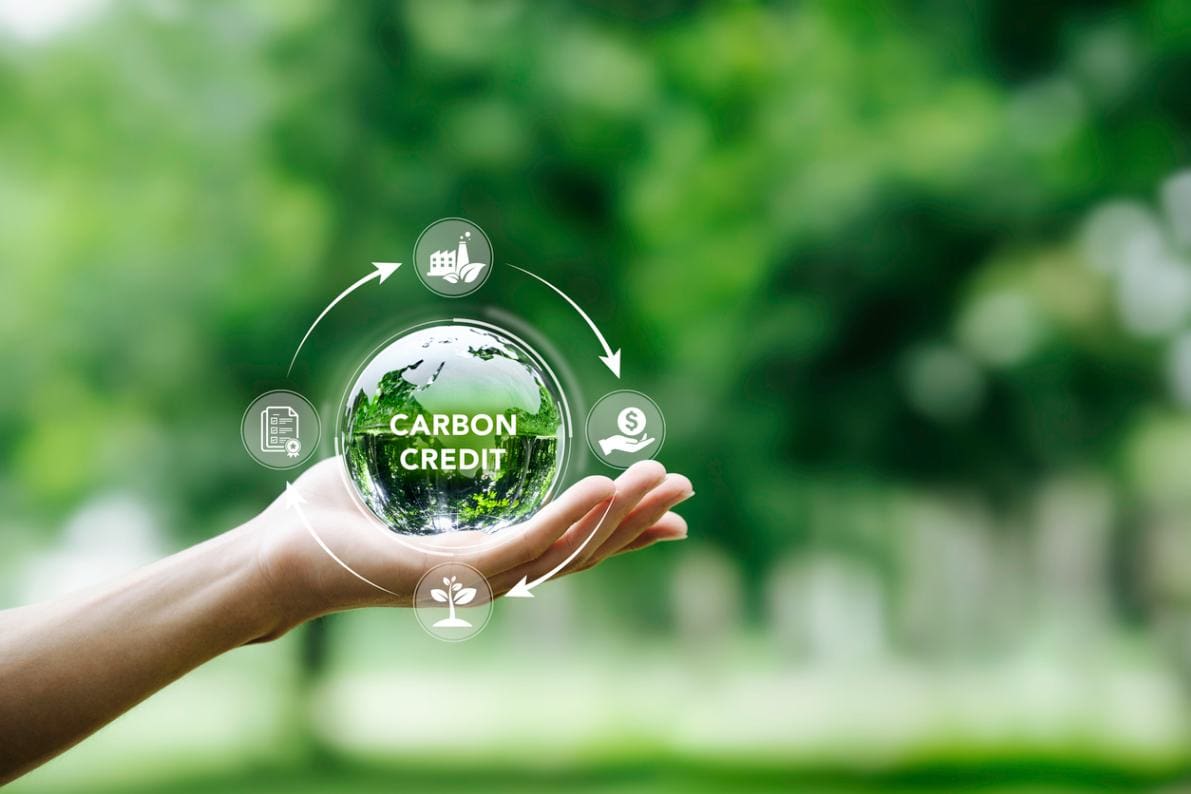
Carbon credits are bought and sold in carbon markets. By buying carbon credits from organisations that eliminate or significantly reduce greenhouse gas emissions, businesses and individuals can use the carbon market to make up for their carbon emissions. A ton of carbon dioxide with equivalent amount of other greenhouse gas avoided, sequestered, or decreased is equal to one trading carbon credit. A credit turns into an offset and it is non-tradable when utilised to cut, sequester, or prevent emissions.
The establishment of carbon trading is due to the increase in greenhouse gas emissions that has adverse effects on growth and development, as well as global warming, climate changes, and environmental events. It is also one of the subjects that came into the spotlight in Kyoto Protocol, that aims to minimise the adverse effects of global warming and climate changes caused by greenhouse gas emissions and has become a point of discussion.
Many organisations buy and sell carbon credits to reduce their carbon emissions, in return they receive a carbon credit for each metric ton of carbon emission reduction, sequestration, or destruction. They sell or buy carbon credit at voluntary carbon marketplace. Those who emit excess carbon are eligible to offset their emissions by purchasing carbon credit or offset in marketplace to balance out their emissions. If they produce fewer emissions, an organisation can sell their credits to other organisations. However, if an organisation exceeded its emissions cap, federal laws require the company to purchase credits from other organisations through compliance markets. This is called a cap-and-trade programme.
Organisations are allowed to release carbon emission as long as such amount of fee are paid, unfortunately emitting carbon emission is wrong that the organisation should be fined instead. Moreover, carbon trading causes moral hazard, that large carbon-trading corporations could essentially pay their way out of their ethical obligation of mitigating global warming. While carbon trading, at least theoretically, could help offset the world’s overall emissions, the damage from extreme weather events such as natural disasters and loss of life cannot be translated into monetary terms.
Furthermore, carbon credits do not have fixed price as their pricing fluctuates with supply and demand. It is also fluctuates with complexity, called cost-based model. The model sets the fair-trade minimum price to cover the costs of a carbon offset programme. Carbon credits in 2023 cost $40 to $80 per metric ton of CO2 or equivalent GHG emissions. However, carbon pricing can fluctuate greatly with demand. For example, in 2021, carbon trading prices plummeted to just $12.70 per metric ton. If carbon prices are expected to rise, emitters and speculators will load up to maintain the bottom line. But by doing so, not only will the focus shift towards profiteering rather than curbing emissions, countries lagging in decarbonising will find it even harder to run their economies and emission-reducing efforts. Some experts argue that to effectively incentivise a reduction of emissions, carbon prices need to go even higher.
The different standard in the existing voluntary carbon market makes carbon trading not fungible. Even though carbon trading will increasingly become a necessity for an organisation, environmental and social sustainability play a crucial role in this trading. Thus, relevant legislation and standards are still needed to be done for carbon development.

Dr. Arifha Mohamad
Senior Lecturer
Johor Business School
Universiti Tun Hussein Onn Malaysia (UTHM)
Edited by:
Fazita Md Tab (English Editor)
This article was published in:
1. UTHM News (uthm.edu.my), 20 May 2024: CARBON TRADING: FOR SUSTAINABILITY OR PROFIT?
https://www.bernama.com/en/thoughts/news.php?id=2291612









